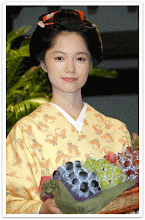This years AFI Film Festival had a much anticipate treat for fans of the late Japanese Film Legend Toshiro Mifune with the the debut screening of MIFUNE: The Last Samurai. Directed by Oscar Winning Director Steve Okazaki who grew up watching Samurai Films starring Mifune here in Los Angeles on a bed sheet at a Japanese Community Center. As quoted by the director himself, he thought this was going to be great to go through old film clips but it turned out to be more than anticipated. You could say this documentary was more than a labor of love. We would say it was a unique insight to the origin of Samurai Film recounting the golden age of Japanese Silent films.
Those early films now mostly lost to time and war were initially based on Japanese Noh plays and later became known as "Chambara" films. The word "Chambara" comes from the sounds of clashing swords in film making. Up until Mifune entered his near accidental career, Japanese Samurai films were at best predictable and very formulaic. Enter fate. It was at the outbreak of war with China that young Manchurian born & raised Toshiro Mifune was conscripted into the Imperial Japanese Army and sent to Japan for the first time. Like many conscripts, he was mercilessly beaten by his superiors for his rebellious attitude.
 Mifune later is assigned as an Aerial Photographer. Being that his father was a studio photographer who often used him as a model. At some point in World War II he was taken off flight status and assigned to a crew chief position for the Kamikaze. This is where the documentary gets deep. Director Steve Okazaki reveals in his film with the help of interviews from both family and former cast & crews that knew him that his role in the war was to see the young pilots off before their desperate suicide missions. He would tell them: "Don't say you are doing this for the Emperor. Say good bye to your mothers. Now off you go." This may have played a role in his heavy drinking after the war. It was said by his family that when the war came up he would break down in tears. One can only imagine the faces of the young pilots he unwillingly was tasked to send to their deaths. It was clear in his eyes when he played Admiral Yamamoto in Tora Tora Tora this sense of guilt and burden he carried.
Mifune later is assigned as an Aerial Photographer. Being that his father was a studio photographer who often used him as a model. At some point in World War II he was taken off flight status and assigned to a crew chief position for the Kamikaze. This is where the documentary gets deep. Director Steve Okazaki reveals in his film with the help of interviews from both family and former cast & crews that knew him that his role in the war was to see the young pilots off before their desperate suicide missions. He would tell them: "Don't say you are doing this for the Emperor. Say good bye to your mothers. Now off you go." This may have played a role in his heavy drinking after the war. It was said by his family that when the war came up he would break down in tears. One can only imagine the faces of the young pilots he unwillingly was tasked to send to their deaths. It was clear in his eyes when he played Admiral Yamamoto in Tora Tora Tora this sense of guilt and burden he carried.
Like many returning soldiers returning to Japan after the war's end, Mifune sought to find work in Tokyo. Being that he had been a photographer, he applied at Toho Studios. But for some reason his application was submitted for an acting position instead of the photographer position he had wanted. He failed miserably and became enraged. Lucky for us that legendary director Akira Kurosawa saw something in him and cast him for his early post war films. It would not be until after 1950 when the American Occupation ban on films made with swords that the most iconic Samurai film of all time directed by Kurosawa starred Mifune in The Seven Samurai.
Seven Samurai became an international hit and back home in Japan it redefined Samurai film. No longer were "Chambara" films made. Rather, films explored what became known in the West as "The Anti-Hero." Mifune's presence was so large, he would star in many films with Kurosawa such as Rashomon, Throne of Blood, Yojimbo, Sanjuro, Red Beard, and The Hidden Fortress which became the inspiration for Star Wars. This documentary contains a literal who's who of Japanese acting greats and former crews who worked with Mifune. They got everybody they could find but Tatsuya Nakadai. Trust me, we asked! We feel that as far as documentary films go, Steve Okazaki has presented Mifune fans a real treat. Just seeing film clips from the Samurai Trilogy on the big screen makes you want to leap out of your seat with excitement and joy that only a Mifune film could inspire. This film which surprisingly is narrated by Keanu Reeves (Whoa!) is a must for any Toshiro Mifune fan. We at American Mishima congratulate Director Steve Okazaki for this cinematic delight! That beinbg said, we have to let you know that this will be screened on limited release in December 2016 in Los Angeles, San Francisco, and New York City. If you can not see this in those cities, we recommend you look out for it when it becomes available on Amazon or Netflix. Please Enjoy!

























No comments:
Post a Comment